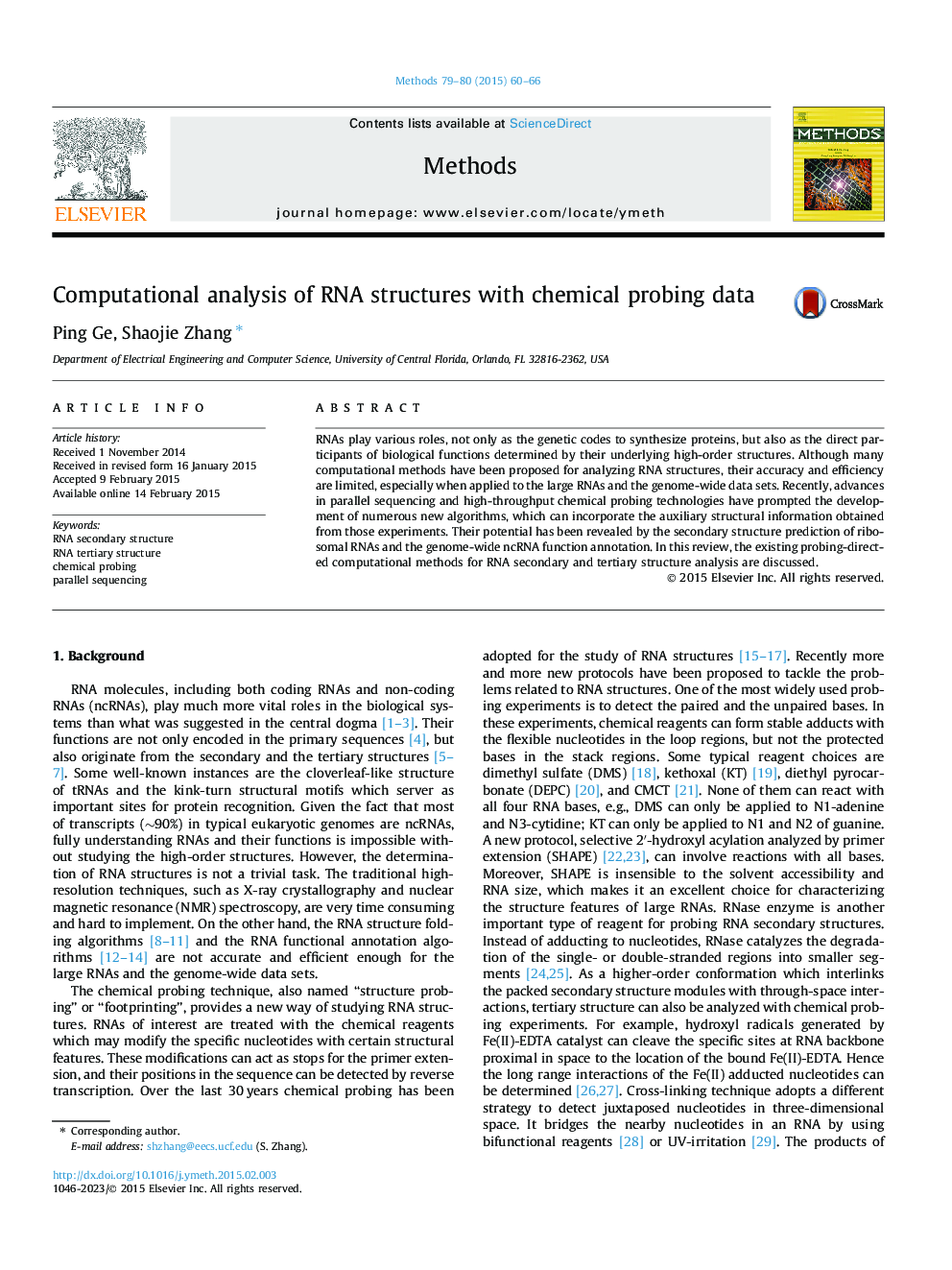| Article ID | Journal | Published Year | Pages | File Type |
|---|---|---|---|---|
| 1993349 | Methods | 2015 | 7 Pages |
•Chemical probing is a powerful technique for RNA structure analysis.•Probing signals can be quantified as reactivities.•Reactivities can be used for computational RNA structure analysis.•Challenges of probing-based computational methods are discussed.
RNAs play various roles, not only as the genetic codes to synthesize proteins, but also as the direct participants of biological functions determined by their underlying high-order structures. Although many computational methods have been proposed for analyzing RNA structures, their accuracy and efficiency are limited, especially when applied to the large RNAs and the genome-wide data sets. Recently, advances in parallel sequencing and high-throughput chemical probing technologies have prompted the development of numerous new algorithms, which can incorporate the auxiliary structural information obtained from those experiments. Their potential has been revealed by the secondary structure prediction of ribosomal RNAs and the genome-wide ncRNA function annotation. In this review, the existing probing-directed computational methods for RNA secondary and tertiary structure analysis are discussed.
